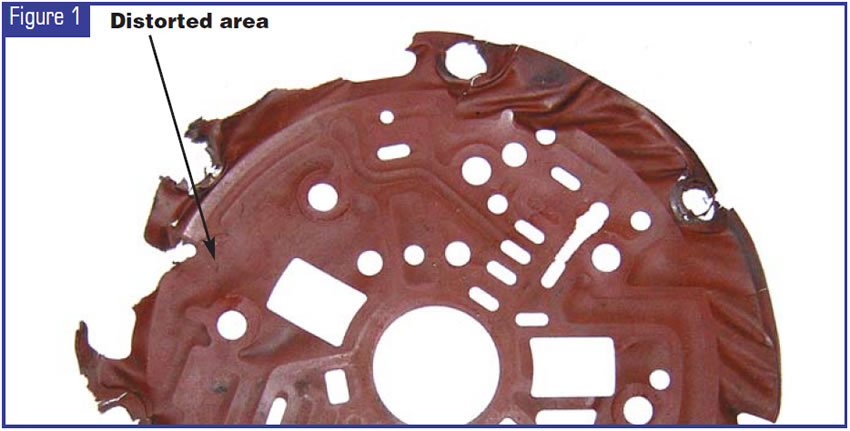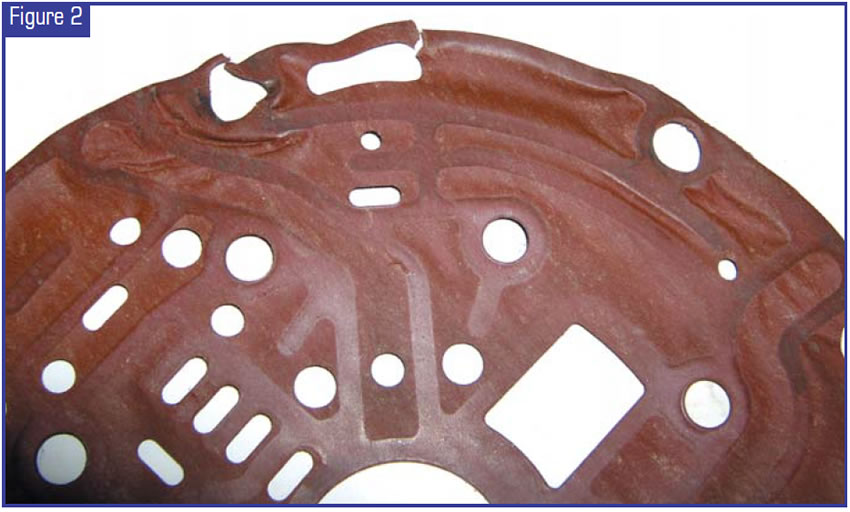
TASC Force Tips
- Author: Ed Lee
Possible Converter-Slip Code or Possibly Multiple Ratio Codes
A 1995 BMW 325i equipped with a 4L30-E transmission came into a transmission shop. The customer was referred to the transmission shop by a technician at a general service facility because of a “check transmission” light and the torque-converter-slip code that he found during his inspection.
No codes were present when the car arrived at the transmission shop, but they did reappear about 10 minutes into the road test. About five more minutes into the road test the 1-2 and 2-3 shifts had deteriorated to the point that a slip was felt. At this point it was determined that the transmission was going to have to come out for an internal inspection.
When the transmission was torn down, both the 2nd and 3rd clutches showed signs of slippage. The root cause of the slippage was determined to be a pressure leak in both the 2nd-and 3rd-gear clutch circuits, caused by the deterioration of two gaskets at the back of the overdrive section where it is mated to the main case. Similar damage also was found on the gasket between the pump and the front of the overdrive section.
There are four gaskets in this transmission that appear to be made of the same material: All are red, the fourth being the gasket between the back of the main case and the extension housing. These gaskets are all 0.012 inch thick. All the internal leaks in the transmission eventually were traced to these gaskets, including the leak that caused the torque-converter-slip code.
The distortion in the gaskets (see figures 1 and 2) led the technician to believe that some type of additive put into the transmission had caused the gaskets to distort.
The company that makes the gaskets for every transmission that GM produces in North America was kind enough to test the material. This was especially nice of them, because this was not their gasket material. The gasket material in the 4L30-E transmission is supplied by a European gasket supplier, because the transmission is manufactured in Strasbourg, France.
The joints in the 4L30-E transmission are directly in line and concentric with the crankshaft and, because of the engine and transmission mounting to the vehicle, are subject to driveline reaction torque. This is especially critical in the 4L30-E transmission because of the length of the bolts that retain the pump and overdrive section of the transmission to the main case. The clamping force on the gasket, times the coefficient of friction of the gasket, must create a force that is greater than the force of the driveline torque. If the surfaces are held together tightly enough by clamping load and friction that they do not slide, they will rarely fail.
Unfortunately, the original-equipment gaskets in the 4L30-E transmission have a coefficient of friction low enough that it is almost impossible for the long retaining bolts to put enough force on the joint to keep it from sliding. When sliding occurs at the joint between the mating surfaces and the gaskets, it is only a matter of time before the gasket starts to move around in the joint. The sliding surfaces typically tear the gaskets, causing them to work their way out of the edges of the joint, or into the cavities within the joint (see figures 1 and 2).


Technicians with an “it has to be OE” philosophy need to pay close attention. The replacement gaskets provided by Interface Solutions Inc., the aftermarket manufacturer, are slightly thicker than the OE gaskets (0.015 inch) but are more compressible and have a higher surface friction. The thicker, more-compressible material spreads the bolt load out better and creates a larger effective contact area for friction to hold the parts together. This will keep the members of the joint from sliding.
In summary, it’s not always correct to assume that OE parts are better.
Special thanks to Brian C. Lehr at Interface Solutions Inc. for his help.

Ed Lee, Sonnax technical specialist, is a member of the TASC Force (Technical Automotive Specialties Committee), a group of recognized industry technical specialists, transmission rebuilders and Sonnax Industries Inc. technicians.













